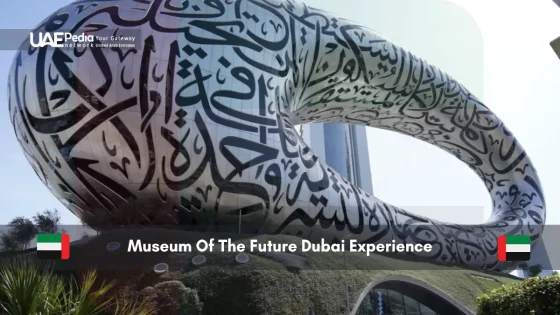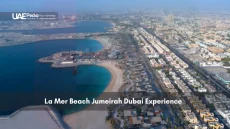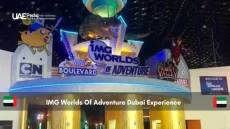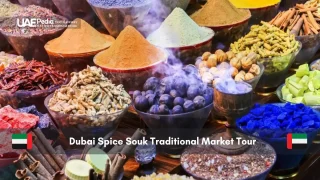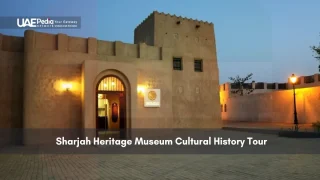What if Dubai’s glittering skyline isn’t its most enduring treasure? Tucked along the creek, a quieter marvel thrives—a place where clay whispers stories and threads weave legacies. This isn’t just a tourist stop; it’s a living bridge between generations.
Here, artisans mold history with their hands. You’ll watch potters shape earthy vessels using methods older than the UAE’s dunes. Nearby, weavers transform camel hair into intricate patterns—each knot a coded message from Bedouin ancestors. These traditional Emirati crafts aren’t behind glass but alive, breathing, and eager for your touch.
The space pulses with energy. Children laugh while trying their first pottery wheel spin. Travelers lean in as metalworkers hammer brass into delicate coffee pots. Every corner offers “see it, try it” moments that turn observers into creators.
- Discover hands-on workshops where history becomes your classroom
- Explore how centuries-old techniques adapt to contemporary design
- Connect with makers preserving skills that define a nation’s identity
Exploring the Historic Dubai Heritage Village
Not all treasures in this desert metropolis glitter—some hum with the rhythm of hands shaping clay and looms clicking in harmony. This cultural enclave near Dubai Creek isn’t merely preserved; it’s alive, where every demonstration bridges yesterday’s wisdom with today’s curiosity.
Where Stories Take Physical Form
Built in the 1990s, the space recreates pre-oil era life with startling accuracy. Think wind towers catching breezes, coral-stone buildings, and shaded courtyards where elders once gathered. “We’re not actors—we’re keepers of memory,” shares a third-generation basket weaver during her palm-frond braiding session.
Getting There Made Simple
Find this time capsule on Al Shindagha Road, a 12-minute drive from Burj Khalifa. Hop on the Green Line Metro to Al Ghubaiba Station, then stroll 10 minutes past the creek’s dhows. Best part? Entry won’t cost a dirham—just your willingness to engage.
| Feature | Details |
|---|---|
| Operating Hours | Sat-Thu: 8 AM–10 PM Fri: 3–11 PM |
| Hands-On Activities | Pottery, weaving, metalwork (Free to watch, small fee to try) |
| Nearby Landmarks | Dubai Museum (1.2 km) Textile Souk (800 m) |
Morning visits beat the crowds and heat—arrive by 9 AM to chat with artisans before tour buses roll in. Evening brings cooler temps and the scent of freshly baked regag bread from nearby stalls.
dubai heritage village traditional crafts: A Closer Look
In the heart of the city, ancient traditions pulse with life. This cultural hub reveals how generations have turned raw materials into storytelling devices.
Patterns That Speak Volumes
Al Sadu weaving steals the spotlight—tight geometric patterns once used to identify tribes. Artisans pass down techniques using wooden looms unchanged for centuries. “My grandmother’s hands taught mine—these patterns are our family’s voice,” shares a weaver threading camel hair.
Clay That Holds Memories
Nearby, potters shape vessels using the hand-coiling method. Each piece starts as a spiral, rising like desert dunes. Local clay mixes with crushed shells for strength—a recipe older than the UAE federation itself.
“Every fingerprint left in the clay connects you to those who shaped this land long before roads existed.”
| Craft | Technique | Material Used |
|---|---|---|
| Al Sadu Weaving | Geometric patterns | Camel hair, wool |
| Pottery | Hand-coiling method | Local clay |
| Metalwork | Hammered brass designs | Brass, copper |
Try weaving a coaster during free afternoon sessions. Watch how brass transforms into coffee pots through rhythmic hammering. These hands-on moments turn observers into temporary keepers of tradition.
What makes these crafts endure? They’re not relics—they’re living conversations between earth, hands, and history. You leave not just with photos, but with the weight of clay and the whisper of threads against your palms.
Immersive Artisan Workshops and Live Demonstrations
Imagine rolling clay between your palms as desert winds whisper ancient secrets. This cultural hub thrives on participation—visitors don’t just watch history unfold, they shape it. More than 80% of travelers who try these activities report feeling a deeper connection to local culture.
Hands-On Pottery and Weaving Sessions
Artisans guide you through each movement—from centering clay on a wooden wheel to threading camel-hair yarn. Workshops begin with raw materials: gritty local earth for pottery, undyed wool for textiles. “Feel how the clay resists? That’s how we know it’s alive,” laughs Fatima, a fifth-generation potter.
Interactive Craft Demonstrations
Watch brass transform under rhythmic hammering. Smell fresh tamarisk wood burning in metal-smithing pits. These aren’t staged shows—they’re working studios where you can ask questions mid-process. Many artisans speak English fluently, swapping stories while their hands keep working.
| Activity | Duration | Skill Level |
|---|---|---|
| Pottery Basics | 45 mins | Beginner |
| Weaving Patterns | 30 mins | All Ages |
| Metal Engraving | 20 mins | Intermediate |
Morning sessions focus on skill-building. Afternoons buzz with quick demos—perfect for curious observers. You’ll leave with clay under your nails and patterns etched in memory, carrying forward techniques that refuse to fade into history.
Authentic Experiences of Emirati Culture
The scent of cardamom-infused coffee cuts through the desert air, guiding you toward flavors as rich as the region’s history. At this cultural crossroads, every meal becomes a chapter in a centuries-old story—one best enjoyed with sticky fingers and an open heart.
Exploring Culinary Heritage and Local Flavors
After shaping clay or weaving textiles, visitors gather around shared platters. Machboos—fragrant rice with tender meat—arrives in copper pots, its golden hue mirroring desert sands. Crispy luqaimat dumplings follow, drizzled with date syrup that clings to fingers like childhood memories.
Local chefs demonstrate how simple ingredients transform into feasts. “We use what the land provides—dates, camel milk, saffron,” explains Aisha while rolling dough for regag bread. “Food connects us to our ancestors who crossed these sands.”
“I expected beautiful crafts, but the meals made me feel part of the community. Breaking bread here isn’t just eating—it’s belonging.”
| Dish | Key Ingredients | Cultural Significance |
|---|---|---|
| Machboos | Rice, lamb, loomi | Celebration meal for gatherings |
| Luqaimat | Date syrup, cardamom | Symbol of hospitality |
| Harees | Wheat, chicken | Ramadan tradition |
These culinary experiences weave seamlessly with craft workshops. Sip ginger-spiced karak tea while watching weavers create patterns as complex as the spice blends in your cup. It’s culture you can taste—a full sensory immersion that lingers long after the last bite.
Cultural Festivals and Community Celebrations
When the sun dips below the dunes, the real magic begins. This cultural hub transforms into a stage where generations collide—ancestral rhythms pulse through sound systems while children chase glowing lanterns. Festivals here aren’t just dates on a calendar; they’re living threads stitching past to present.
Seasonal Festivals and Traditional Events
The Sheikh Zayed Heritage Festival electrifies the space each winter. Imagine falconry displays beside augmented reality sand art installations. During Ramadan, night markets buzz with henna artists and spice blenders—their stalls lit by fairy lights and the glow of shared iftar meals.
These gatherings do more than entertain. They rebuild bridges between elders and Gen Z creators. A local musician sums it up: “Our festivals are like open-air museums—you don’t just see history, you dance with it.”
| Event | Highlights | Season |
|---|---|---|
| Date Palm Festival | Date tastings, basket races | October |
| Al Marmoom Heritage Week | Camel races, poetry slams | February |
| Eid Nights | Fireworks, folk dances | Lunar calendar |
You’ll find everyone from TikTok influencers to grandmothers clapping along to yowalah dances. Craft fairs feature both palm-frond baskets and 3D-printed jewelry inspired by ancient patterns. It’s this blend that keeps traditions thriving—not behind velvet ropes, but in the sweaty, joyful crush of crowds.
Come during spring’s Haq Al Laila celebration. Kids in neon kanduras collect candies door-to-door while oud players remix nursery rhymes. These events prove culture isn’t frozen in time—it’s a conversation where everyone gets a turn to speak.
Recreating the Past Through Live Reenactments
Time folds like origami paper here—one moment you’re snapping selfies, the next you’re trading pearls with Bedouin merchants from 1938. This cultural hub transforms history from dusty facts into living, breathing encounters. You don’t just learn about the past—you argue with barterers, cheer camel caravans, and smell incense burning in reconstructed merchant tents.
Historical Exhibits That Bring Stories to Life
Actors in hand-stitched costumes don’t perform behind ropes—they pull you into their world. Watch a 1950s fishing village spring to life as “villagers” mend nets using techniques unchanged for generations. A trader might press a replica silver coin into your palm, whispering market gossip from the Trucial States era.
These stories stick because they’re multisensory. Feel the weight of a goatskin water bag. Hear the creak of wooden dhow boats being built. “We use real tools from each period,” explains Mariam, a reenactor playing a 1960s midwife. “When visitors hold these objects, history becomes their experience.”
“You think you’re watching a show until suddenly you’re part of the plot—helping unload a date shipment or learning emergency desert navigation.”
Key events get dramatic treatment:
- The 1971 Union Agreement signing, with actors debating federation terms
- Pearl diving expeditions demonstrating pre-oil era economics
- Bedouin poetry battles under star-lit replica tents
These traditions aren’t frozen in glass cases. Kids race to identify spices in a mock 1940s souk. Teens debate bartering strategies with date farmers. It’s history class without desks—where every lesson leaves sand in your shoes and firelight in your memory.
Discovering Heritage Souvenirs and Local Markets
Step into a kaleidoscope of colors where every stall tells a story—this isn’t shopping, it’s cultural time travel. Narrow alleys buzz with clinking metal and laughter as creators showcase functional art shaped by generations. You’ll find more than trinkets here—each item carries DNA of ancestral skills.
Unique Handmade Products and Keepsakes
Hand-stitched camel-leather journals sit beside geometric wool rugs so precise they look machine-made. Brass coffee pots etched with Bedouin symbols beg to be touched. “These patterns map desert trails,” explains a seller polishing a teapot. “Own one, and you carry our history home.”
| Craft Item | Material | Cultural Significance |
|---|---|---|
| Al Sadu Tote Bags | Camel wool | Tribal identity markers |
| Henna Ceramic Bowls | Local clay | Wedding ceremony essentials |
| Palm-Frond Baskets | Date palm leaves | Ancient food storage solution |
The Vibrant Market Experience
Mornings bring cooler temps and artisans demonstrating techniques. By afternoon, the air thickens with frankincense smoke and haggling banter. Pro tip: smile while negotiating—it’s expected here. Most stalls accept cards, but dirhams earn you warmer interactions.
Watch for makers stamping their family emblem onto purchases. These symbols turn simple items into conversation starters. As one weaver notes: “When tourists choose our work, they help keep stories alive.”
Learning the History Through Innovative Exhibits
Touchscreens and palm-frond baskets share space here—a place where augmented reality meets ancestral wisdom. This cultural hub transforms dusty timelines into vibrant conversations, letting you swipe through centuries with a fingertip.
Where Tech Meets Tradition
Walk past holographic weavers demonstrating Al Sadu patterns. Projection-mapped walls show how fishing villages evolved into modern ports. “We use tech not to replace stories, but to make them stick,” explains exhibit curator Noora Al-Mansoori.
Interactive stations let visitors decode symbolic motifs in woven textiles. Touch a geometric design on the screen, and watch its origin story unfold—from Bedouin tent markers to contemporary fashion runways.
| Exhibit Feature | Learning Outcome | Skill Highlighted |
|---|---|---|
| AR Pottery Wheels | Clay shaping techniques | Hand-coiling methods |
| Soundscape Booths | Historical trade routes | Pearl diving signals |
| Pattern Puzzles | Tribal symbolism | Weaving mathematics |
Kids drag virtual spices across trade maps while elders share firsthand memories. Teens film TikTok tutorials beside artisans—creating unexpected bridges between generations. These displays prove history isn’t frozen—it’s a dance between what was and what’s next.
Plan your educational journey around daily live demonstrations. You’ll leave not just informed, but part of the ongoing story—where every visitor becomes a temporary keeper of fading skills.
Planning Your Visit: Tips and Essential Information
Your adventure through living history deserves smooth logistics. Let’s map out how to maximize your time while respecting local customs and avoiding crowds.
Optimal Times and Visitor Guidelines
Beat the heat and tour groups by arriving early. Mornings (8-10 AM) let you chat with artisans before workshops get busy. Evenings offer cooler temps but expect livelier crowds.
Remember: photography requires permission when capturing faces. Comfortable shoes are non-negotiable—sandy pathways connect exhibits. Carry cash for trying activities or buying handmade souvenirs.
Access, Entry, and Amenities Overview
No tickets needed—entry remains free as part of cultural preservation efforts. Metro riders take the Green Line to Al Ghubaiba Station, then enjoy a 10-minute waterfront walk. Drivers find paid parking near the textile souk (800m away).
| Essential Details | What You Need |
|---|---|
| Opening Hours | Sat-Thu: 8 AM–10 PM Fri: 3–11 PM |
| Nearby Attractions | Textile Market (5 min walk) Dubai Museum (15 min walk) |
| Guided Tours | Free cultural walks at 10 AM & 4 PM |
Many tours dubai operators combine this spot with creek cruises. For DIY explorers, shaded rest areas and water stations appear every 200 meters. Pro tip: download the “Dubai Culture” app for real-time event updates during your visit.
Reflections on the Dubai Heritage Village Experience
The true magic of this cultural journey isn’t found in artifacts—it’s etched in your palms after shaping clay and woven into your memory with every thread. Days here unfold like chapters in a living book, where hands-on activities transform observers into storytellers.
You’ll carry home more than souvenirs. The grit of pottery wheels under your fingers. The rhythm of looms clicking beside local artisans. Evenings spent savoring cardamom coffee while festivals pulse with generations laughing in unison.
What makes this place endure? It’s not frozen in time. Ancient traditions breathe through modern hands—metalworkers hammering tomorrow’s heirlooms, chefs reimagining ancestral recipes. Every demonstration invites you to add your verse to an ongoing story.
Pack curiosity instead of expectations. Arrive ready to ask questions mid-stitch or trade smiles with creators. These encounters don’t just teach history—they reshape how you see the spirit of a nation built on resilience and reinvention.
Your turn. Let desert winds guide you through this gateway where past and present collide. Book those tours, roll up your sleeves, and discover how cultures thrive when we keep their heartbeat alive.
Aim for cooler months (October–March) or align your trip with cultural festivals like Ramadan or UAE National Day for lively performances and themed activities. Mornings are quieter, while evenings buzz with storytelling sessions.
General entry is free! Some hands-on workshops (like pottery or weaving) may charge a small fee for materials, but watching artisans demonstrate skills like palm-frond weaving or metalwork costs nothing. Check signage or ask staff for details.
Yes! Pathways are paved, and most exhibits are accessible. The market area can get crowded, though—opt for a lightweight stroller. Baby-changing facilities are available near the restrooms.
Most workshops operate on a walk-in basis. Arrive early during peak seasons to secure spots. For group bookings (10+ people), email the Dubai Culture & Arts Authority at least a week ahead.
Think of it as a living museum! Unlike Global Village’s global pavilions, this spot focuses solely on Emirati traditions. It’s smaller than the Dubai Museum but offers interactive demos you won’t find elsewhere. Pair it with Al Fahidi Historic District for a full heritage day.
Absolutely—snap away! Just ask permission before photographing artisans up close. Drones are prohibited, and some indoor exhibits may restrict flash photography to preserve delicate items.
Al Ghubaiba Metro Station (Green Line) is a 12-minute walk away. From there, hop on bus 8 or grab a taxi to the village entrance. Paid parking is also available if you’re driving.



